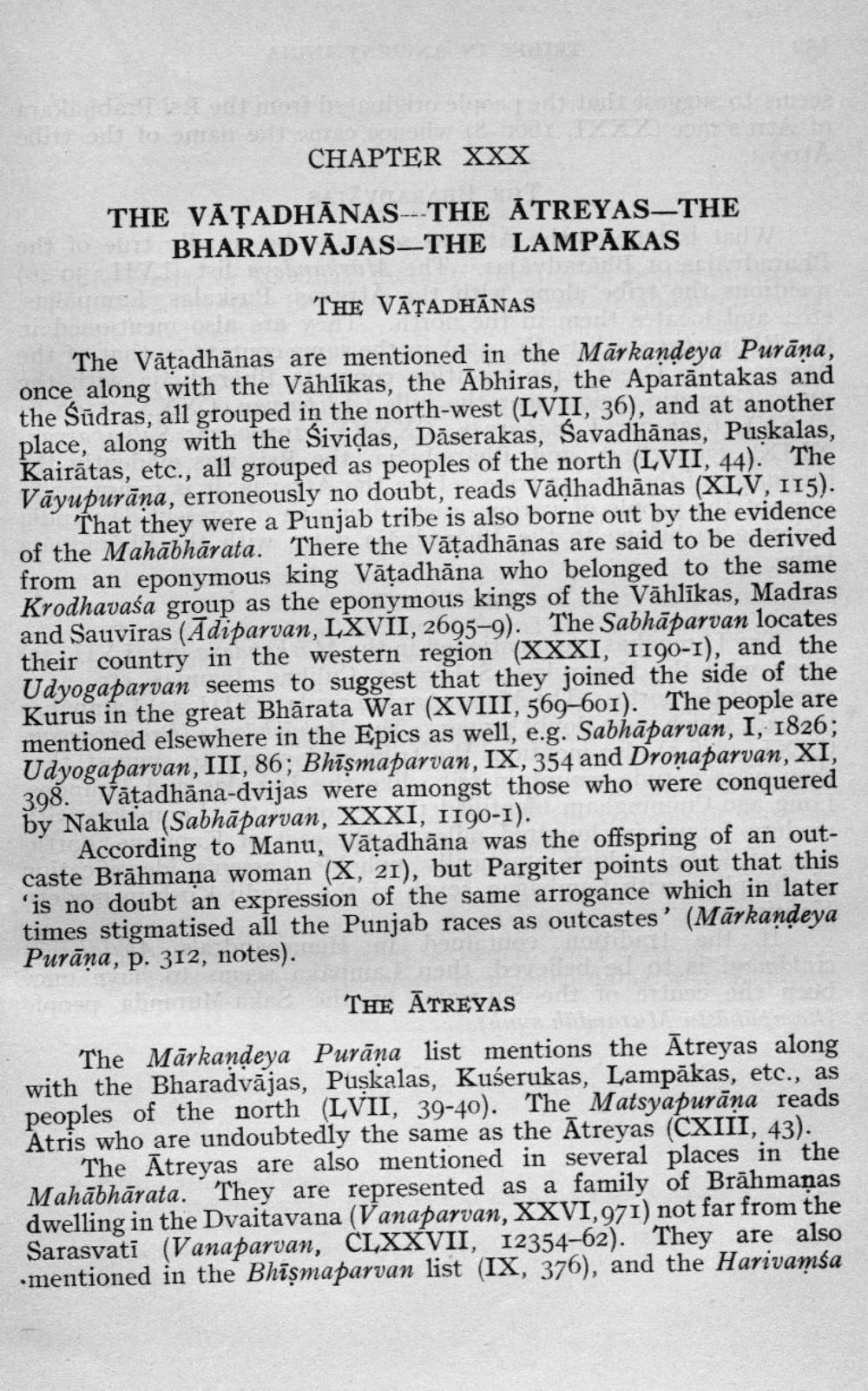________________
CHAPTER XXX
THE VĂȚADHĀNAS---THE ATREYAS—THE
BHARADVĀJAS—THE LAMPĀKAS
THE VĀȚADHĀNAS The Vātadhānas are mentioned in the Mārkandeya Purana, once along with the Vāhlikas, the Ābhiras, the Aparāntakas and the Śūdras, all grouped in the north-west (LVII, 36), and at another place, along with the Sividas, Dāserakas, savadhānas, Puskalas, Kairātas, etc., all grouped as peoples of the north (LVII, 44). The Vāyupurāna, erroneously no doubt, reads Vādhadhānas (XLV, 115).
That they were a Punjab tribe is also borne out by the evidence of the Mahābhārata. There the Vātadhānas are said to be derived from an eponymous king Vātadhāna who belonged to the same Krodhavaśa group as the eponymous kings of the Vählikas, Madras and Sauvīras (Adi parvan, LXVII, 2695-9). The Sabhāparvan locates their country in the western region (XXXI, 1190-1), and the Udyogaparvan seems to suggest that they joined the side of the Kurus in the great Bhārata War (XVIII, 569-601). The people are mentioned elsewhere in the Epics as well, e.g. Sabhāparvan, I, 1826; Udyogaparvan, III, 86; Bhīşmaparvan, IX, 354 and Dronaparvan, XI, 398. Vātadhāna-dvijas were amongst those who were conquered by Nakula (Sabhāparvan, XXXI, 1190-1).
According to Manu, Vātadhāna was the offspring of an outcaste Brāhmaṇa woman (X, 21), but Pargiter points out that this
is no doubt an expression of the same arrogance which in later times stigmatised all the Punjab races as outcastes’ (Mārkandeya Purāna, p. 312, notes).
THE ĀTREYAS The Mārkandeya Purāņa list mentions the Atreyas along with the Bharadvājas, Puşkalas, Kuśerukas, Lampākas, etc., as peoples of the north (LVII, 39-40). The Matsyapurāna reads Atris who are undoubtedly the same as the Atreyas (CXIII, 43).
The Ātreyas are also mentioned in several places in the Mahābhārata. They are represented as a family of Brāhmaṇas dwelling in the Dvaitavana (Vanaparvan, XXVI,971) not far from the Sarasvati (Vanaparvan, CLXXVII, 12354-62). They are also •mentioned in the Bhīşmaparvan list (IX, 376), and the Harivamsa




